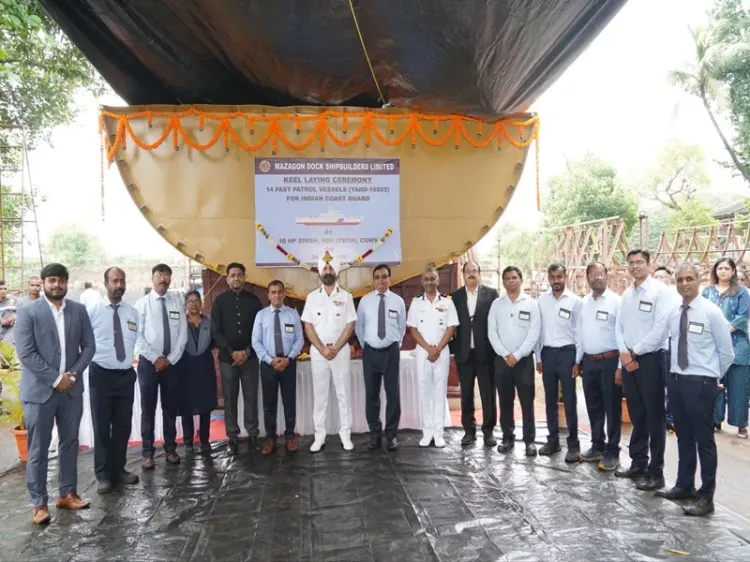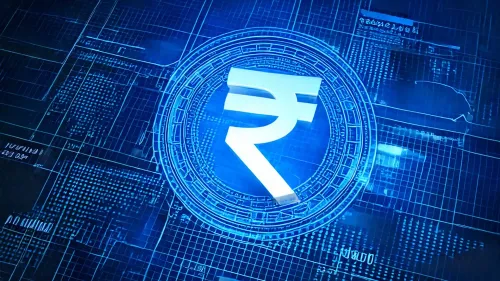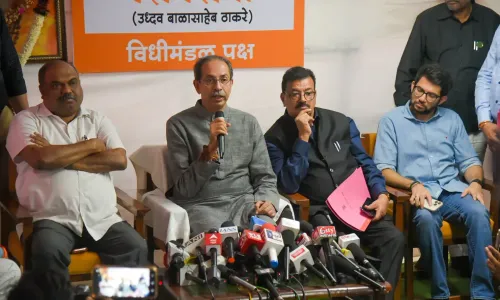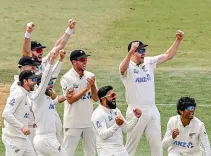Is ICG's Future Bright? Keel Laying of 2 Fast Patrol Vessels at Mazagon Dock

Synopsis
Key Takeaways
- Keel Laying of second FPV signifies progress in maritime security.
- Focus on indigenous production enhances self-reliance.
- Advanced technologies to be integrated into vessels.
- ACVs will serve as agile force multipliers.
- Supports India’s vision of ‘Aatmanirbhar Bharat’.
Mumbai, Oct 30 (NationPress) The Keel Laying ceremony for the second Fast Patrol Vessel (FPV) and the Plate Cutting of the fifth FPV under the 14 FPV Project for the Indian Coast Guard (ICG) was conducted at Mazagon Dock Shipbuilders Limited (MDL) on Thursday, as per an official announcement.
Furthermore, the Girder Laying Ceremonies for the second and third indigenously manufactured Air Cushion Vehicles (ACVs) for the ICG were held at Chowgule’s Rassaim Yard, Goa.
The contract for designing and constructing 14 FPVs, which includes an indigenous content of 60 percent, was signed on January 24, 2024, according to a statement from the Defence Ministry.
Each FPV is outfitted with indigenously produced gearboxes. These water-jet propelled vessels have an approximate displacement of 340 tonnes and are engineered for coastal security, search and rescue, and law enforcement operations.
The vessels will incorporate cutting-edge technology, featuring AI-based predictive maintenance systems and multipurpose drones, highlighting the integration of advanced technologies into India’s maritime defence capabilities, as stated in the announcement.
The contract for six ACVs, which is based on the established Griffon Hoverwork design from the UK, was signed on October 24, 2024, and includes over 50 percent indigenous content.
These ACVs are capable of high-speed patrolling, reconnaissance, interception, interdiction, and all-weather search and rescue missions, functioning as agile force multipliers to ensure rapid response and seamless mobility across shallow waters, marshes, and open seas.
Once operational, they will signify a major technological advancement in India’s coastal security framework, according to the Defence Ministry.
The FPVs and ACVs are being constructed in alignment with the nation’s vision of ‘Aatmanirbhar Bharat’ and will significantly enhance the ICG’s presence in the Indian Ocean Region (IOR), the official remarked.
The Indian Coast Guard was established on February 1, 1977, serving as an auxiliary service for maritime law enforcement and undertaking “Safety and Protection” tasks in Indian waters.
It is responsible for safeguarding the nation’s oceanic and offshore resources, such as oil, fish, and minerals, assisting mariners in distress, and enforcing maritime laws regarding poaching, smuggling, and narcotics.
The ICG is also dedicated to conserving marine environments, protecting rare species, and collecting scientific data to support the navy during wartime.










